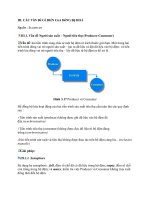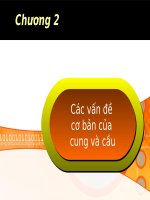Các vấn đề hiện tại của ngừng tim ngoại viện
Bạn đang xem bản rút gọn của tài liệu. Xem và tải ngay bản đầy đủ của tài liệu tại đây (7.49 MB, 124 trang )
Out-of-hospital Cardiac Arrest
Contemporary Issues
Kwan S Lee MD FSCAI FACC
Associate Professor of Medicine
Sarver Heart Center
University of Arizona
Relevant Disclosures
None
Improving Bystander Chest
Compression CPR
An Alternative Form of CPR:
CardioCerebral Resuscitation
Three Pillars
1.
2.
3.
Chest Compression-Only BLS for witnessed
unexpected collapse in adults
New Cardiocerebral Resuscitation ACLS
algorithm for dispatchers and EMS
personnel
Post Resuscitation Care to include the use
of mild hypothermia and aggressive
reperfusion
Thank You
Thank You
“OK, Doc…but what are you going to do
differently when we bring more post cardiac
arrest patients to the hospital
with a pulse and BP?”
Current Outcomes From OOH CA
Number of Patients
100
100 pts
80
Δ= 60%
60
40
40 pts
20
Largest drop off occurs
In hospital, where 75%
Of those initially
resuscitated die
Δ=75%
Δ= 50%
10 pts
5 pts
0
Pre-arrest
ROSC
Hosp DC
Surv at 1 yr
15 (26%)
Resuscitation 2007;73:29-39
What Makes the Difference?
Aggressive Post Resuscitation Care
Two major factors:
• Mild Therapeutic Hypothermia
• Early Coronary Angiography & PCI
Hypothermia for Coma After Cardiac Arrest
Hypothermia
Normothermia
Dr. Fritz Sterz, Vienna, Austria and The Hypothermia After Cardiac Arrest
Study Group, N Engl J Med 2002; 346:549-556
Hypothermia and Post Resuscitation Care
First promising post resuscitation
therapyEVER!
Improved survival
Improved neurological function of survivors
Hypothermia
in the
guidelines
AHA
guidelines:
2005,
2010 & 2015
Comatose out-of-hospital VF:
2005: Class IIa recommendation
2010: Changed to Class I recommendation
2015: Remains Class I recommendation, LOE B-R
In-hospital arrest, other rhythms:
2005: Class IIb recommendation
2010: Still Class IIb recommendation
2015: Changed to Class I, LOE C-EO
The TTM Trial – Nielsen et al
The TTM Trial – Nielsen et al
p=0.51
Making sense of the post-arrest trials
no cooling
HACA
36%
100% VF
33oC
no cooling
53%
0
10
20
30
40
% 26%
survival
50
60
Bernard
100% VF
33oC
49%
36oC
52%
33oC
50%
Both arms are active Rx !
TTM
80% VF/VT
How can
this be?
CAD and OOH Cardiac Arrest
70% of Adult victims of OOH CA
have CAD
Culprit Vessel Concept
The worst presentation of ACS is not STEMI …
but rather Cardiac Arrest !
Potential Value of
Coronary Angiography Post Arrest
Identify ‘culprit’ coronary lesion
Restore coronary flow
Salvage myocardium
? Reduce risk of Re-arrest
? Improve hemodynamics of CNS perfusion
? Improve Survival
Who Should Go to the Cath Lab
Post Resuscitation?
Patients resuscitated from OHCA
Associated with a STEMI
Patients resuscitated from OHCA
Without ST Elevation
ILCOR 2015 Resuscitation Science Review
Hospital Reperfusion Decisions After ROSC
We recommend emergency cardiac catheterization
laboratory evaluation in comparison with cardiac
catheterization later in the hospital stay or no
catheterization in select adult patients with ROSC
after out-of-hospital cardiac arrest (OHCA) of
suspected cardiac origin with ST elevation on ECG.
Welsford M, et al; on behalf of the Acute Coronary Syndrome Chapter Collaborators. Part
5: acute coronary syndromes: 2015 International Consensus on Cardiopulmonary
Resuscitation and Emergency Cardiovascular Care Science With Treatment
Recommendations. Circulation. 2015;132(suppl 1):S146–S176.
2015 AHA CPR Guidelines
2015 Recommendations—Updated
Coronary angiography should be performed
emergently (rather than later in the hospital stay or
not at all) for OHCA patients with suspected cardiac
etiology of arrest and ST elevation on ECG
(Class I, LOE B-NR).
O’Connor RE, et al. Part 9: acute coronary syndromes: 2015 American Heart
Association Guidelines Update for Cardiopulmonary Resuscitation and Emergency
Cardiovascular Care. Circulation. 2015;132(suppl 2):S483–S500.
2015 AHA CPR Guidelines
2015 Recommendations—Updated
Coronary angiography is reasonable in post–cardiac
arrest patients where coronary angiography is
indicated regardless of whether the patient is
comatose or awake
(Class IIa, LOE C-LD).
O’Connor RE, et al. Part 9: acute coronary syndromes: 2015 American Heart
Association Guidelines Update for Cardiopulmonary Resuscitation and Emergency
Cardiovascular Care. Circulation. 2015;132(suppl 2):S483–S500.









